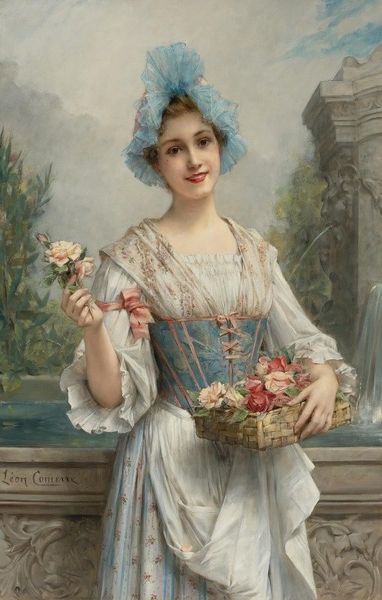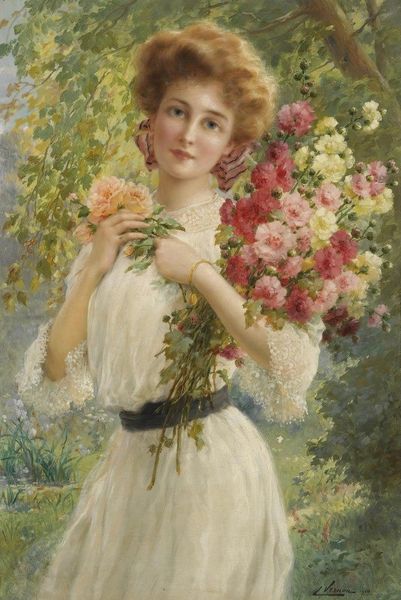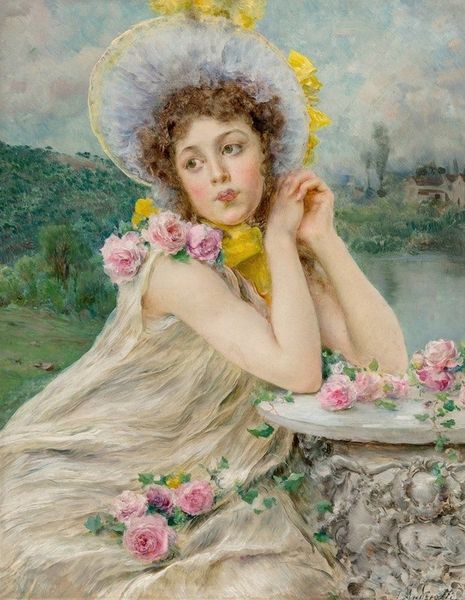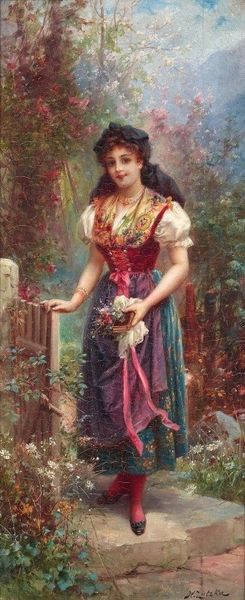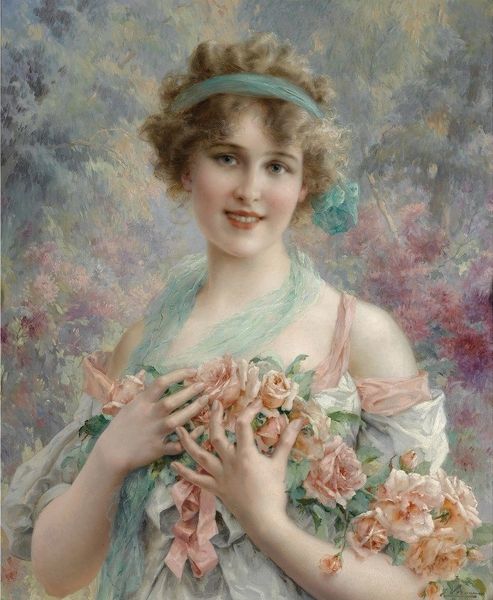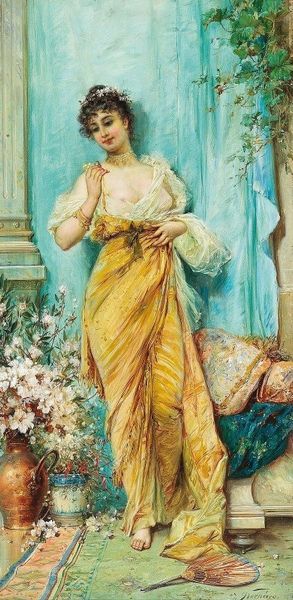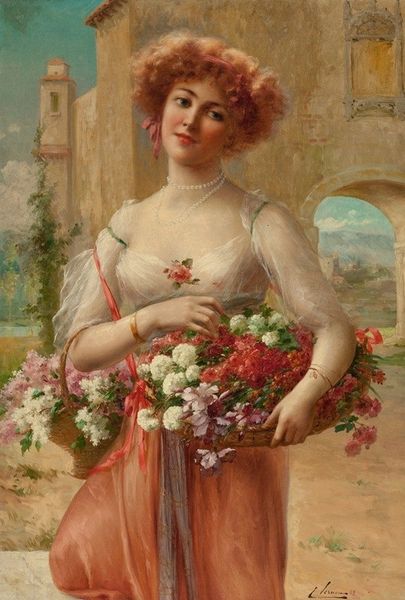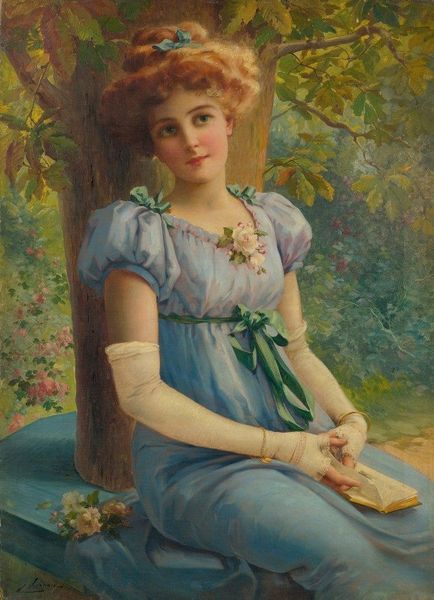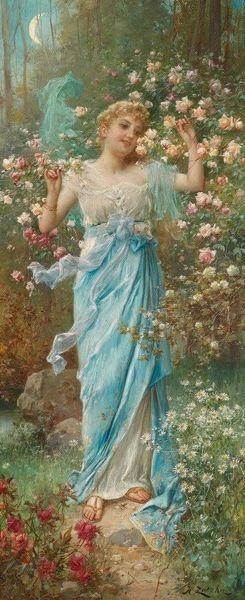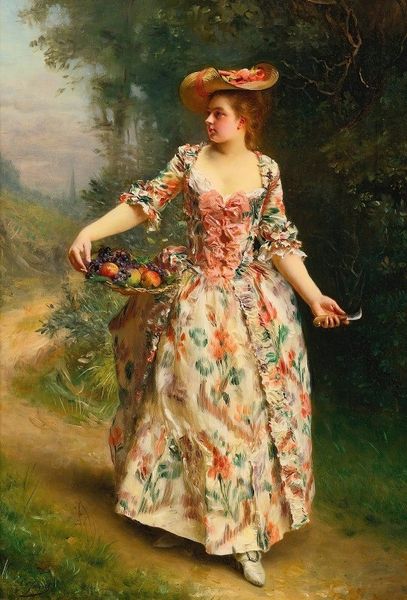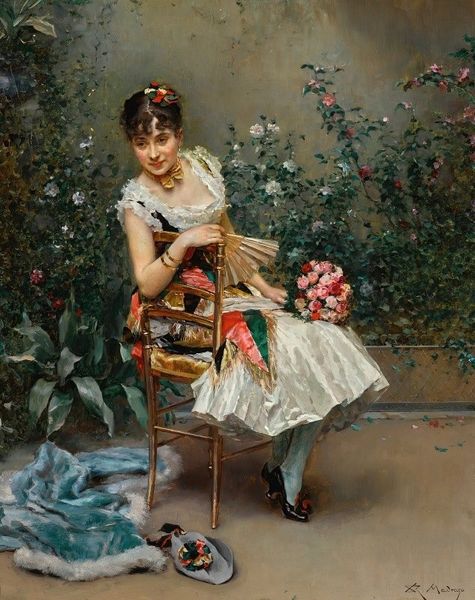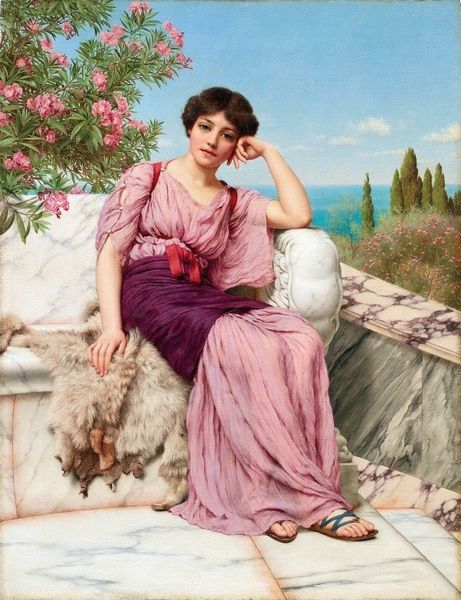
painting, oil-paint
#
portrait
#
figurative
#
painting
#
impressionism
#
oil-paint
#
oil painting
#
naive art
#
painting painterly
#
genre-painting
Copyright: Public Domain: Artvee
Curator: Before us, we see “A Beautiful Flower Girl”, a painting attributed to Hans Zatzka, executed in oil paint with clear stylistic inclinations towards impressionism. There is something instantly cheerful about this work. It seems to vibrate with light and almost fairytale energy. What are your first thoughts? Editor: It’s undeniably charming, with all that textured fabric and the tangible weight of the water pot. I’m interested in how the labor of gathering and carrying becomes almost… performative here, idealized in a way. Curator: Precisely, and it’s that tension I want to delve into. Zatzka’s positioning of this “flower girl” amidst a picturesque, idealized landscape subtly romanticizes labor. But let's think about her identity within the broader context of class and gender dynamics. Her clothing, while vibrant, points to a specific socio-economic standing and performative gender norms, does it not? Editor: Yes, but it’s also how Zatzka uses the medium of oil paint to depict textiles. Note the way the fabrics drape, suggesting movement and activity, while clearly communicating different materials and patterns. There's skill involved not only in harvesting, but in this highly detailed rendering of her dress and the material wealth the subject is trying to emulate or signify through these accouterments. Curator: Consider also how her gaze invites the viewer into this staged scene. Is it an invitation of equality or of implied social distance? It speaks volumes about spectatorship and reinforces a potentially problematic power dynamic. It almost reduces her person to her production, her service as a worker to a decorative object in this space. Editor: Absolutely, and in a broader context, the ready availability and wide consumption of materials, the way the impressionist and post-impressionists democratized subject matter itself… it brings into focus our own consumption of these narratives, doesn’t it? The ease with which the "beautiful flower girl" becomes a popular trope is definitely something to think about when seeing all those materials brought to this particular arrangement. Curator: I find myself reflecting on how we, as viewers, interpret beauty, class, and gender within this painted context, acknowledging the complex and nuanced relationship between the artist, the subject, and ourselves. Editor: Agreed, viewing her specifically within her context makes her feel more substantial than just an image, reminding us that even portrayals of simplicity involve real materials, labor, and complex social underpinnings.
Comments
No comments
Be the first to comment and join the conversation on the ultimate creative platform.
